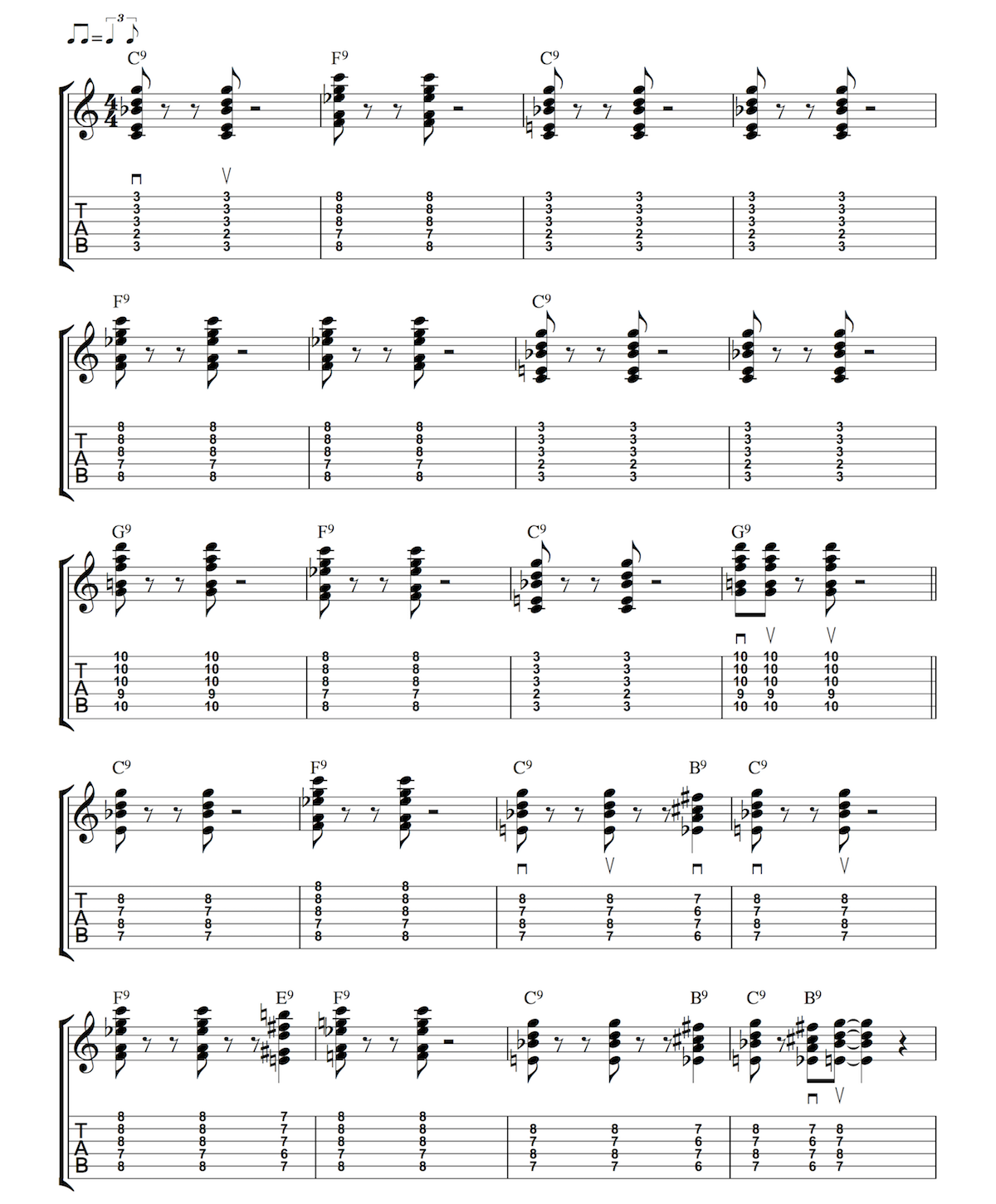Wherever you have a 7th chord you can always use a 9th chord instead for a more colourful jazzy sound. A seventh chord contains the root, 3rd, 5th and flattened 7th notes of the parent major scale. To form a 9th chord we’re adding in an extra note which is – you guessed it – the 9th degree of the parent major scale. So a C9 would contain the notes C, E, G, Bb and D. (Yes, the 9th is the same note as the 2nd, but when we’re talking about chords it’s usual to refer to it as the 9th.) In practice one or more of these notes may be omitted when playing them on the guitar.
In this lesson I show you how to play a blues using just 9th chords. I use two different chord voicings, both of which are essential blues chords that you should definitely know how to play. I didn’t mention it in the video, but remember to keep the low E string muted when playing these chords, as that’s essential for getting a clean sound. Just let your thumb come over the top of the neck and lightly damp the 6th string.
The rhythm I’m using involves playing on beat one, and the upbeat of beat two in each bar – an on-beat, off-beat feel, sometimes referred to as a Charleston rhythm. It makes sense to play this with a downstroke followed by an upstroke of the pick. Keep your right hand moving up and down in an 8th note rhythm and squeeze down the chord grip in the appropriate places. Right-hand scratches will help you keep time, though be careful not to let them become too prominent.
The sheet music can be found below. Download here. There are two 12 bar choruses. The first is very simple and uses a single chord voicing, the second uses two chord voicings and introduces a few half-step approach chords, like in the previous lesson.

